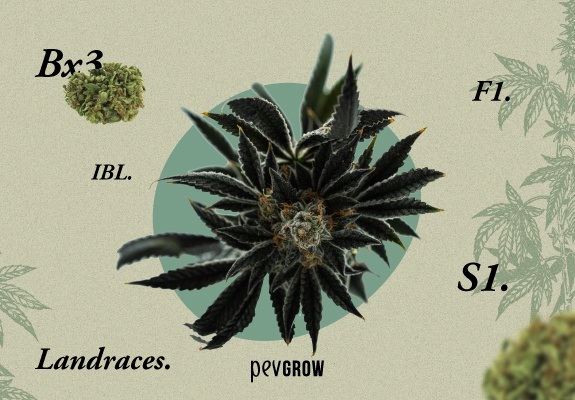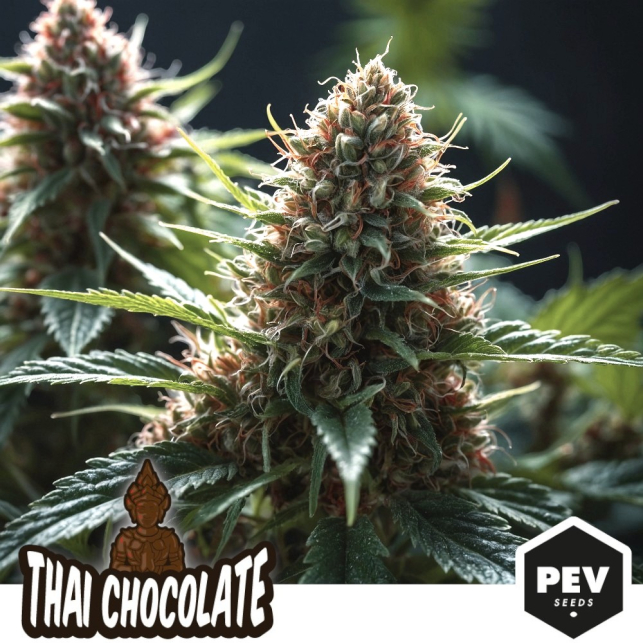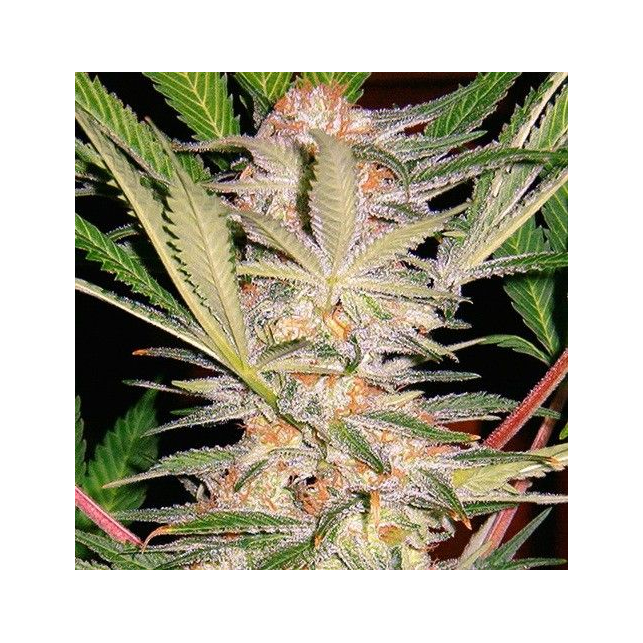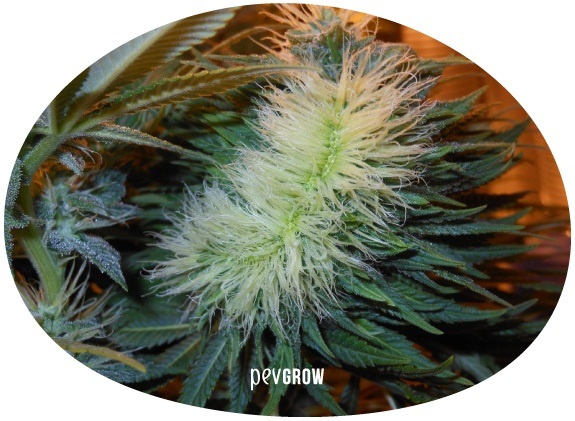

30-06-2020 10:00:34 - Updated: 30 June, 2020
Many times we hear or read terms related to cannabis varieties that we do not understand very well. F1, Landraces, Bx3 or IBL are concepts that sometimes are associated with the name of a certain strain, but do we know exactly what they mean? In this post we will try to clarify the issue, are you interested? Let’s start in chronological order…
⭐ Pure varieties or Landraces
They are the native genetics of a given geographical area, some of them emerged spontaneously, from seeds carried by the wind or by some animal, and others were carried by humans to new regions or countries. These plants have evolved over the years, adapting both to the climate and to the unique factors of that particular environment: the soil, the spectrum of light, the amount of CO2, etc.
Landraces have never been mixed with other varieties, maintaining those specific traits that make them unique, so they are also called pure lines. These strains can include Sativas, Indicas, Ruderalis and even Afghanics, which are cannabis subspecies. This classification basically depends on the geographical latitude and altitude, and from these genetics have emerged all the hybrids and polyhybrids that we have nowadays. Some examples of these plants are the Colombian Punto Rojo, the Afghan Deep Chunk or the Pakistan Chitral Kush.
When we receive a Landrace genetics already manipulated by the human and we continue working it this line can be called “Purebred”, and if we don’t know how many generations of “artificial” work it has, we will call it Fn (Filial elevated to N) and from that line each generation will be called Fn+1, Fn+2, etc…

One of the cannabis strains that changed the cannabis landscape in the United States in the 1960s, and inspired a whole generation of artists, the legendary Chocolate Thai Strain sativa…
Bank: PEV Bank Seeds. Type: Feminized.
Genetics: Chocolate Thai x Big Bud x Chocolate Thai.
Haze,Kush,Lemon,Skunk
Flowering period: 60-65 days
Phenotype: Sativa.
Harvest ext.HN/HS: Mid-October/Mid-April
Outer/indoor production : 900g/plant / 550 g/m2.
THC: 22 % – CBD: 1.2 %.
⛳ F1 hybrids, the first mixtures of varieties
They are varieties that mix the genes of 2 pure strains. Many times we read or hear this term in polyhybrids, but it can really only be used properly for this purpose, that is, the first generation resulting from the union of 2 Landraces.
These plants have certain advantages, enjoy hybrid vigour and remain very uniform, but they also have some drawbacks. Hybrid vigour is a factor that provides extra strength and resistance when 2 geographically distant varieties are combined. This is because they acquire traits from both parents, about 50% of each, so offspring are capable of withstanding pests and diseases which are common to the areas from which their ancestors originated. Another reason why this happens is because pure genetics suffer some degeneration due to inbreeding, caused by consanguinity, that is, by crossing only between them. This is automatically corrected by crossing it with another strain, the more different or geographically distant the better.
If we continue to cross between the F2s we will produce F3 hybrids, but the result will be a little more unstable. In these generations, the breeder‘s experience is crucial when selecting the parents to be crossed, which can stabilize some traits in the offspring or lose them forever. Reina Madre from Original Delicatessen or Orient Express from ACE Seeds are 2 good examples of F1 varieties.
✨ Regular seeds. What are they ?
They are the result of a cross between a male and a female, and are also called Standard seeds. This is the original format of cannabis seeds, the way nature produces them, and until just 2 decades ago they were the only ones available.
Whenever a male plant is involved in a cross, the offspring will be regular, i.e. both males and females will come out randomly. There can be regular photodependent, autoflowering or any kind of seeds.
👌 Polyhybrids or hybrid mixtures
When 2 F1 hybrids from different lines are crossed, polyhybrids are created, for example White Widow X Sandstorm. White Widow Strain is a cross between an Indian sativa and a pure Brazilian variety and Sandstorm is a Pakistani crossed with a Moroccan male. When 2 polyhybrids are crossed the resulting specimens are also called polyhybrids.
The first generation of the cross between 2 of these hybrids can be considered F1 as well, but they would be F1 polyhybrids. In this case, the distribution of genes that happens when two pure varieties are crossed is not respected, and the offspring is usually heterogeneous. Many times these crosses are called F1 hybrids but it is really a wrong concept, because they are polyhybrids. Real F1 hybrids can only be descended from a cross between Landraces or IBL strains.

Wedding Cake is the most popular cannabis variety in the United States, and no wonder, as this plant offers you enormous potency, a delicious taste, and an incomparable amount of resin …
Bank: PEV Bank Seeds. Type: Feminized.
Genetics: Triangle Kush X Animal Mints
Flowering period: 65 days
Phenotype: 30% Indica/ 70% Sativa
HN/HS outdoor harvest : Mid October/Mid April
Outdoor production: 1 kg/plant
Indoor production: 450 g/m2.
THC : 25% – CBD : 0,4% – CBG : 0,1%
When 2 sativa hybrids are crossed, the resulting variety is called a sativa polyhybrid, and if 2 indica hybrids are crossed, the offspring would be indica polyhybrids. If a 100% sativa hybrid is crossed with a 100% indica hybrid, the offspring would be a balanced polyhybrid, which would be approximately 50% indica and 50% sativa, although it must be taken into account that in many of these crosses one of the parents is more dominant than the other, and the resulting variety could look more like one of the 2 parents. It is also possible to get a polyhybrid with approximately 50% indica and 50% sativa by combining 2 polyhybrids, in fact it is very common in the cannabis seed market today.
By combining a mostly indica hybrid with another mostly indica variety, the offspring would be a mostly indica polyhybrid, just as by combining a mostly sativa hybrid with another sativa variety, the resulting seeds would be mostly sativa polyhybrids. In the case of crossing a pure strain with a hybrid or polyhybrid, the offspring would also be a polyhybrid, and its genetics would have to be taken into account to determine whether it is mainly indica or sativa.
Below we will look at different examples of each of these polyhybrids:
- Black Domina: Indica polyhybrid.
- Original Haze: Sativa polyhybrid
- Blue Cheese: Mainly indica polyhybrid
- Jack Herer: Mainly sativa polyhybrid
- Grease Monkey: Balanced polyhybrid with 50% indica and 50% sativa approx..
📲 IBL cannabis varieties
IBL stands for Inbred Line, which means breeding on a non-Landrace line until it becomes uniform or “pure”. There are several ways to get an IBL variety, through backcrossing or after several generations of inbreeding, minimum up to F5, but it depends on the initial stability of the genotype chosen to become IBL
IBLs created by backcrossing or Bx
An example of IBLs achieved through backcrossing is Reservoir Seeds‘ Sour Diesel IBL. They chose the elite clone known as ECSD (East Coast Sour Diesel) and used a New York Diesel male from Soma Seeds to create the Bx1 offspring. From that offspring they selected a male as close to the mother as possible and used it to re-pollinate the ECSD and produce the next generation, in this case Bx2. In the next step they did the same thing again, selecting a good male to backcross, but in this generation they already found more phenotypes similar to the initial elite clone, so they continued backcrossing until most of the offspring were fairly homogeneous, sharing the traits that made ECSD so famous.
Another example of this way of creating IBL plants is Brothers Grimm’s Cinderella 99, in this case with a weed bought in a coffee-shop in Holland that fascinated him, supposedly Jack Herer, where some seed came out, which he called Princess once grown and preserved as a mother plant. After a couple of backcrosses the offspring already had about 75% of homogeneity, due to the great dominance of the Herer surely. He called this generation Princess 75, he backcrossed again and then he achieved a stability of phenotypes of approximately 88%, so he called it Princess 88. With a last backcross the traits of the Princess were just fixed in 99% of the individuals, so it could be considered IBL, which he called Cinderella 99.
IBL genetics by crossing subsidiaries
Among the IBLs achieved through crossing generation to generation, the Skunk, Blueberry or Northern Lights Strain stand out. These varieties were made from the late 70’s to the early 80’s on the west coast of the USA. At that time, indoor cannabis growing was not yet widespread, so no mother plants were preserved, leaving them no choice but to cross between the best phenotypes of each generation. Both Skunk#1 and Northern Lights stabilized after an indeterminate number of generations, and the Blueberry came out of the same line as the Flo, but was then stabilized by DJ Short for several generations. Within each of these strains there are certain variations in the offspring, but in general they share many traits with each other.
What is the best way to create IBL varieties ?
Each technique has its advantages, but we have to understand that the result is different, because stabilizing features through backcrossing is faster, but inbreeding degeneration comes much earlier. This is because we work with the genes of a single phenotype, especially from Bx3. On the other hand, when a line is stabilized by means of generation-to-generation crosses, we work with populations of different phenotypes and, although more time is needed to homogenize the progeny, in the long run it is much more interesting since they generally contain much more hybrid vigor.
🚀 Feminized or 100% female genetics
These plants come from the cross between 2 females, both with XX sex chromosomes, so all the offspring are also XX, that is, females. In order to cross 2 female cannabis plants it is necessary to reverse or invert the sex of one of them, so that it can produce male flowers and pollinate the other female.
This kind of marijuana seeds succeeded especially in Europe, first with the extinct No Mercy Supply bank, and later with Dutch Passion, although they were not really stable. Later on, Dinafem was the first company that came out to the market offering only feminized varieties, but in this case created from Mohan Ram‘s method, that is, with Silver Thiosulphate (STS). If you want to see how this process is done in detail, I recommend reading this article that talks about how to make feminized cannabis seeds.
S1 feminized seeds. What are they ?
They are the result of the crossing between a female plant by itself, therefore they are always feminized. These seeds sometimes arise spontaneously, as some plants produce one or a few male flowers, but in this case as they come from plants with a hermaphroditic point, these seeds will always be female but also prone to hermaphroditism.
To produce good S1 offspring it is necessary to select a sexually pure female, just like to create normal feminized seeds. The best way to test the sexual stability of a cannabis plant is to subject it to different types of stress, those that do not form male flowers under any circumstances can be used to create 100% feminized plants. But to produce good S1 plants it is not enough to use sexually pure females, ideally they should be made from varieties that are as homogenous or stabilized as possible, so that the offspring are as well.
The great advantage of this way of breeding is that in one step you can get a good stability, but only if you use a suitable plant, as I said before.
But there is also some inconvenience, since by using a single phenotype many times they cannot continue to breed among themselves, because degeneration by consanguinity comes very soon, and sometimes S2 are already deformed or worse than S1. There are quite a few varieties offered in S1 format in the current cannabis market, among which we highlight the White S1 by Raskal, the Grandaddy Purple S1 by Connoisseur genetics or the S.A.D. S1 by Sweet Seeds.

S.A.D. S1 has established itself as a well known variety in Valencia, winning 2nd place in the Cannabis Cup organized by Maria Barraca in 2004…
Bank: Sweet Seeds
Type: Feminized.
Genetics: Afghani
Flowering period: 8-9 weeks
Phenotype: 90% Indica / 10% Sativa
Outdoor Harvest HN: End of September
Outdoor Harvest HS: End of March
Production outdoor: 350-550 gr/plant
Production indoor: 400-500 gr/m2
THC: 15-20% – CBD: 1.8%
✅ Automatic flowering cannabis varieties
Auto varieties are mainly descended from the ruderalis subspecies, although they can also be created from some semi-autoflowering landraces. They originally come from northern latitudes or high altitude areas, where the summer is short and the plants have to hurry to flower and mature in order to continue the lineage.
The first seed bank to start selling strains with Ruderalis genes was The Seedbank, owned by the great Neville Schoenmakers, who later took them to Sensi Seed, where they created Ruderalis Skunk and Ruderalis Indica, but they were semi-autoflowering hybrids, lacking the final step to get all the specimens to be automatic flowering. The first 100% autoflowering commercial seeds were Joint Doctor’s Lowryder, from which came the much improved Lowryder#2, the ancestor of the vast majority of autos nowadays.
🔥 Fast version, early o quick, the fastest photodependents
The generation resulting from the cross between a photodependent variety and its own autoflowering version is called fast, early or quick. The first seed bank to officially start marketing these plants was Sweet Seeds, although we suspect that other banks did this before without saying so. Some examples of these plants are the Cream Caramel Fast Version from this same bank, the Quick Gorilla from Dinafem or the Sugar Black Rose from Delicious Seeds.
🎯 Cannabis polyploid, triploid and tetraploid
As a general rule, cannabis plants are diploid, which means that they contain 2 chromosomes that are responsible for transmitting the genetic information for each trait to the offspring. However, sometimes some polyploid specimens appear randomly in a natural way, which can be triploid (3 chromosomes for each trait) or tetraploid (4 chromosomes) which arise as a malformation.
There are also ways to artificially produce this type of plant, with the application of colchicine, an alkaloid that comes from a plant known as Colchicum Autumnale. One of the advantages of polyploid plants is their size, which is usually larger, especially the tetraploids, which in some cases form 4 branches per node, increasing the harvest significantly. An important factor of the triploids is that they are practically sterile, and this can be negative and positive at the same time, depending on how you look at it.
The Valencian seed bank Buddha Seeds (Spain) did a series of experiments with polyploid plants, where they empirically demonstrated many of these aspects. We hope that in the near future we will be able to have more information about this, as we find it a very interesting topic.

👾 Conclusion
There are many ways to do cannabis breeding, and depending on the seed format or the goal we have when creating a new variety we will choose one method or another. I hope you liked this post and, if so, I would like you to share it to spread the information and reach all cannabis lovers.






Great read, answered my main questions on breeding, needed to find diversity to get a shorter flowering plant, now I know that the second generation will give the different phenotypes I’ll be looking for. Thank you
Hi Rich G,
Glad to hear you found our article helpful! Best of luck!
You are a gentleman and a scholar. Great work!